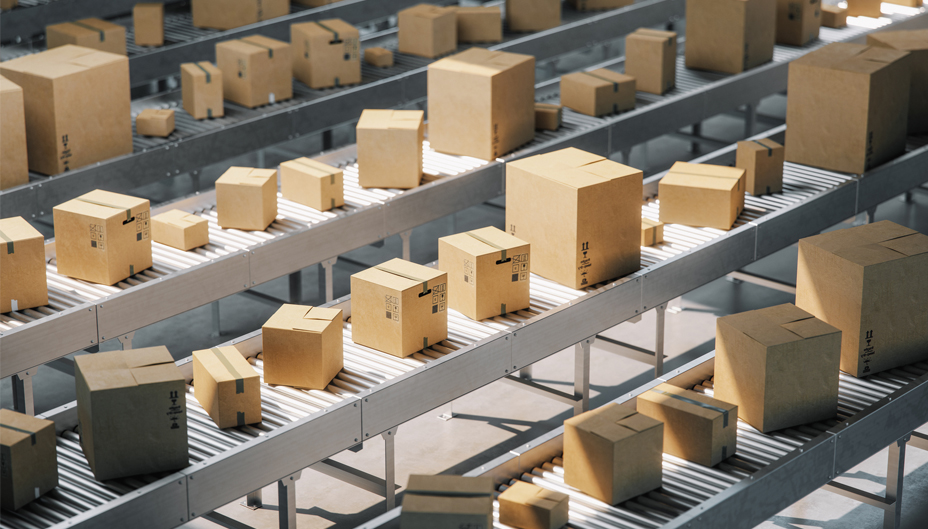Out of Stock: Why Supply Chains Are Still Disrupted
Written by The Inspired Investor Team
Published on August 11, 2021
minute read
Share:
Bicycles. Beer cans. Two-by-fours. These are just a few of the consumer products that have been difficult to come by in Canada at various points during the pandemic. Worldwide, shoppers have seen shortages of everything from computer chips and ketchup packets, to dumbbells and desks.
Meanwhile, many of the products that are available have gotten more expensive, including furniture, fridges, diapers and chicken wings. Lumber prices have only just returned to Earth since hitting record-high prices in May, propelled by soaring demand and a low supply of processed wood products. Even if you haven't been building a new deck or fence, you're likely feeling it—growing demand for wood pulp has been driving up the price of toilet paper (but at least we're not panic-buying it anymore).
While there have been some encouraging signs of a return to normal as restrictions ease, the pandemic has revealed the incredible complexity and interdependency of the world's supply chains, a vast web of retailers, distributors, producers, warehouses and transportation systems. One disruption can cause a ripple effect felt on the other side of the planet. It will happen again. Floods, wildfires, droughts, wars, economic crises—all of these can impact supply chains. The question isn't if, but when.
When the pandemic began, it caused production and shipping delays in China, the world's largest exporter of goods. Around the world, lockdown and work-from-home orders led to a surge in demand for consumer goods. And now, as factories ramp up production again, there aren't enough ships, containers or workers to handle all that cargo. Shipping costs remain an active driver of higher inflation, as Eric Lascelles, Chief Economist at RBC Global Asset Management, pointed out in a recent MacroMemo update.
So, how did supply chains get to this point? The reasons are more varied than you might think. Here's a roundup of what we've been reading about:
Rising consumer demand: Pandemic lockdowns and work-from-home orders spurred demand for a wide range of goods, including sports gear, exercise bikes, gaming consoles, air purifiers, ergonomic chairs, monitors, boats, cars and more. The boom in home and backyard renovations boosted demand for lumber, copper, drywall and other materials. Now, as cities reopen and the economy recovers, consumer demand is rising—and suppliers are still struggling to keep up.
Changing consumer habits: Canadians have been spending a lot more time in the kitchen, cooking from scratch and baking up a storm. Last spring, flour and yeast were often scarce. The pandemic has also accelerated the shift to online shopping, pushing up demand for cardboard boxes and wooden pallets.
Factory shutdowns: Factories around the world have been closed due to COVID-19 restrictions and disease outbreaks. Many manufacturers are highly specialized, making just a few parts. If they're out of commission, those missing components could hold up the entire production process.
Shipping delays: Transportation bottlenecks, traffic jams at ports, labour shortages due to illness and lockdown, delayed off-loading of cargo, and high demand for shipping containers have caused major delays around the world.
"Just In Time" manufacturing: Companies in many industries follow this management strategy. Factories receive product parts right before they're needed. This reduces the burden of stockpiling large quantities of goods, but it can mean shortages if demand soars.
The bullwhip effect: When the pandemic struck, many companies cut back on product orders and capacity, anticipating slower sales. When demand began to grow, suppliers couldn't simply flip a switch and resume production. The "bullwhip" metaphor refers to swings in inventory that get larger and larger up the supply chain—at each link, information is further distorted. Suppliers of raw materials see the greatest variations in demand. (The bullwhip effect can lead to surpluses as well as shortages. In recent months, distributors in Singapore had to throw out an oversupply of 250,000 eggs, just a couple of months after stores could barely keep them in stock.)
Lack of semiconductor chips: The global shortage of semiconductor chips is a good example of the bullwhip effect in action. Producing these chips—used in everything from electronics and appliances to vehicles—is complex work. Each one requires up to 2,000 steps and takes up to six months to make, and manufacturers were already facing supply chain issues when the pandemic hit. Today, there still aren't enough chips to go around. A recent Goldman Sachs analysis found that the shortage has affected 169 industries.
Shortage of packaging materials: Some products are unavailable because manufacturers can't get enough bottles, jars, cans, paper bags or plastic packets to hold them. Consumer behaviour is also a factor: restaurants ran out of ketchup packets as delivery and takeout orders surged.
Rising corporate demand: Having been caught unprepared once, some companies are stockpiling a wide range of materials—potentially worsening supply chain disruptions. According to RBC GAM's Eric Lascelles, companies are building reservoirs of inventory at a far greater pace than last year.
Non-pandemic causes: There've been a few: The Ever Given running aground in the Suez Canal with over 18,000 shipping containers on board; winter storms and blackouts in the U.S. halting production of polyfoam and chemicals; low water levels on the St. Lawrence River forcing ships to lighten their loads; government tariffs on imported upholstered furniture; and hackers targeting pipelines. These and other issues have also disrupted supply chains and increased costs.
Back-ordered until... who knows?
No one can predict with certainty when the supply chain upheaval will end. Around the world, companies, governments and academics are looking for ways to prevent and fix future disruptions, from improving climate resilience to applying machine learning technology. Potential solutions could include greater automation and more diverse sourcing, freight providers and distribution channels. Supply chains will never be free of risk, but as with an investing portfolio, it can help to spread the risk around
What's to come?
"Global supply-chain pressures will ease over time as production resources are reallocated to areas seeing the most demand and price increases. Meanwhile, a rotation in household spending—away from things like furniture and electronics and towards services including travel and leisure—will take the heat off production capacity," said RBC Senior Economist, Nathan Janzen, and RBC Economist, Claire Fan, in a recent report on supply-chain disruptions. Still, post-pandemic, they believe labour shortages and climate risks "will remain challenges to the global supply chain."
Find the full report at rbc.com/economics.
RBC Direct Investing Inc. and Royal Bank of Canada are separate corporate entities which are affiliated. RBC Direct Investing Inc. is a wholly owned subsidiary of Royal Bank of Canada and is a Member of the Canadian Investment Regulatory Organization and the Canadian Investor Protection Fund. Royal Bank of Canada and certain of its issuers are related to RBC Direct Investing Inc. RBC Direct Investing Inc. does not provide investment advice or recommendations regarding the purchase or sale of any securities. Investors are responsible for their own investment decisions. RBC Direct Investing is a business name used by RBC Direct Investing Inc. ® / ™ Trademark(s) of Royal Bank of Canada. RBC and Royal Bank are registered trademarks of Royal Bank of Canada. Used under licence.
© Royal Bank of Canada 2025.
Any information, opinions or views provided in this document, including hyperlinks to the RBC Direct Investing Inc. website or the websites of its affiliates or third parties, are for your general information only, and are not intended to provide legal, investment, financial, accounting, tax or other professional advice. While information presented is believed to be factual and current, its accuracy is not guaranteed and it should not be regarded as a complete analysis of the subjects discussed. All expressions of opinion reflect the judgment of the author(s) as of the date of publication and are subject to change. No endorsement of any third parties or their advice, opinions, information, products or services is expressly given or implied by RBC Direct Investing Inc. or its affiliates. You should consult with your advisor before taking any action based upon the information contained in this document.
Furthermore, the products, services and securities referred to in this publication are only available in Canada and other jurisdictions where they may be legally offered for sale. Information available on the RBC Direct Investing website is intended for access by residents of Canada only, and should not be accessed from any jurisdiction outside Canada.
Explore More

Here’s What Every Canadian Should Know About Estate Planning
Insights from Leanne Kaufman to help you feel more confident as you plan
minute read

3 Things We're Watching This Week
What the Inspired Investor team is watching
minute read

What’s Driving the Recent Surge in Gold Prices
Here are some things to watch with the gold market
minute read
Inspired Investor brings you personal stories, timely information and expert insights to empower your investment decisions. Visit About Us to find out more.







